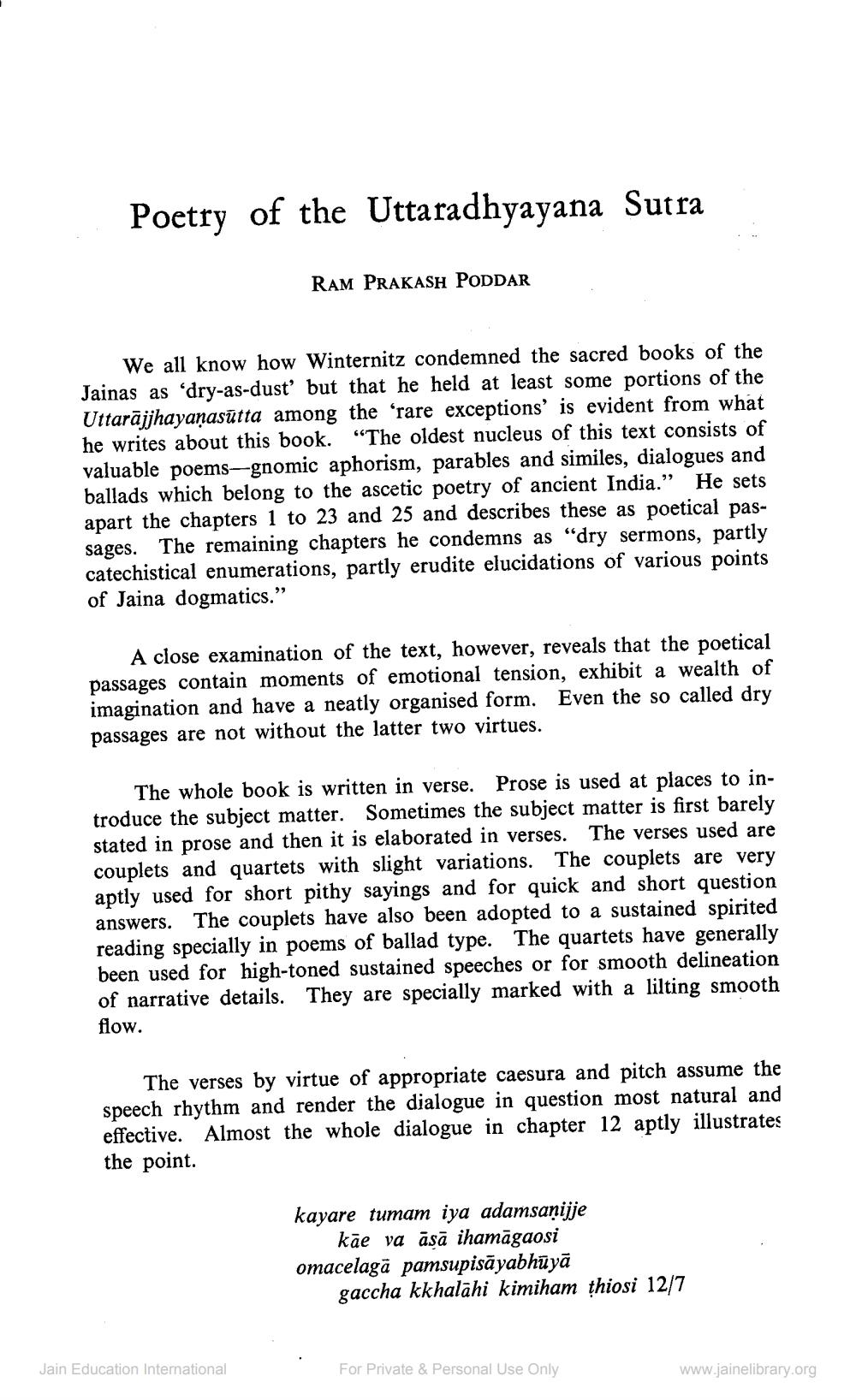________________
Poetry of the Uttaradhyayana Sutra
RAM PRAKASH PODDAR
We all know how Winternitz condemned the sacred books of the Jainas as 'dry-as-dust' but that he held at least some portions of the Uttarājjhayaņasūtta among the 'rare exceptions' is evident from what he writes about this book. “The oldest nucleus of this text consists of valuable poems-gnomic aphorism, parables and similes, dialogues and ballads which belong to the ascetic poetry of ancient India.” He sets apart the chapters 1 to 23 and 25 and describes these as poetical passages. The remaining chapters he condemns as "dry sermons, partly catechistical enumerations, partly erudite elucidations of various points of Jaina dogmatics.”
A close examination of the text, however, reveals that the poetical passages contain moments of emotional tension, exhibit a wealth of imagination and have a neatly organised form. Even the so called dry passages are not without the latter two virtues.
The whole book is written in verse. Prose is used at places to introduce the subject matter. Sometimes the subject matter is first barely stated in prose and then it is elaborated in verses. The verses used are couplets and quartets with slight variations. The couplets are very aptly used for short pithy sayings and for quick and short question answers. The couplets have also been adopted to a sustained spirited reading specially in poems of ballad type. The quartets have generally been used for high-toned sustained speeches or for smooth delineation of narrative details. They are specially marked with a lilting smooth flow.
The verses by virtue of appropriate caesura and pitch assume the speech rhythm and render the dialogue in question most natural and effective. Almost the whole dialogue in chapter 12 aptly illustrates the point.
kayare tumam iya adamsanijje
kāe va āsā ihamāgaosi omacelagā pamsupisāyabhūyā
gaccha kkhalāhi kimiham thiosi 12/7
Jain Education International
For Private & Personal Use Only
www.jainelibrary.org




